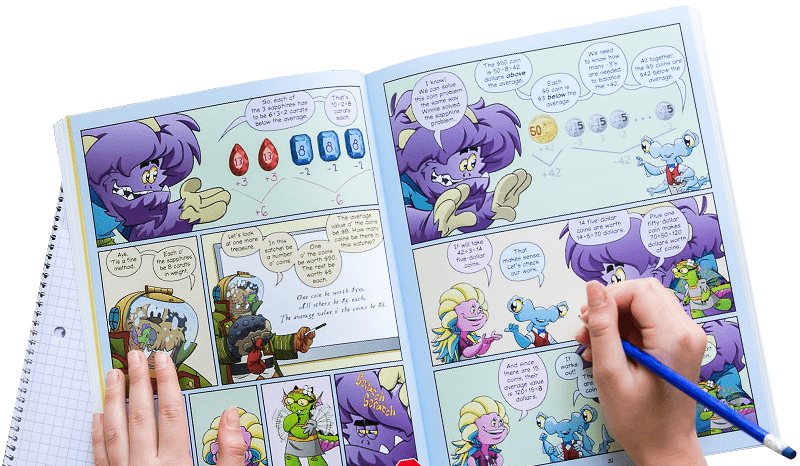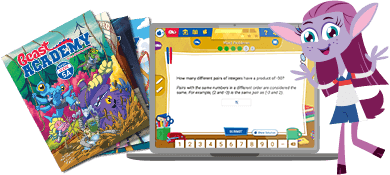Memory: Ten Apart
Add or subtract 10 to find a matching pair. Whoever finds the most pairs wins.
Instructions
This game uses one suit of your 0-20 Deck from the Number Deck activity. (Or see Variations below.) Take out the 0, using only the numbers 1-20.

Shuffle and lay all 20 cards face down.

Take turns. On your turn, flip over any two cards. If the cards are 10 apart from each other, keep them and go again. Otherwise, turn the cards face down. Your turn is over. For example, if you flip over 4 and 14, keep them, since 14 - 4 = 10.

As more cards get collected, it becomes easier to remember where the others are.

Play until all the matches have been found. Whoever has the most pairs wins!
Practice skip-counting by 2 as you count each pair at the end of the game. (Skip-counting is counting by 2's or 3's or some other number. So, skip-counting by 2's means counting 2, 4, 6, 8, 10, etc.)
Don't forget: it's Beast Academy Playground, not Beast Academy Study Hall. Change the rules, be silly, make mistakes, and try again. The Variations and Learning Notes are here for you if you want to dive deeper, but not all of them apply to learners of every age. The most important thing is to have fun.
What do you think of this activity?
We're always looking to improve. Submit your feedback to us below.
- addition
- subtraction
- place value
- spatial reasoning
- skip-counting
- MP8
- K.NBT.A.1
- 1.OA.C.6
- 1.NBT.B.2.b
- 1.NBT.C.5

Ready to level up?
Keep problem solving with Beast Academy’s full math curriculum for students ages 6–13. Check out our captivating comic book series and immersive online platform.
LEARN MOREBring problem-solving to your classroom
Keep your entire class engaged with a full book and online math curriculum, for students ages 6–13. 98% of teachers say they’re satisfied with Beast Academy.
LEARN MORE



Ready to level up?
Keep problem solving with Beast Academy’s full math curriculum for students ages 6–13. Check out our captivating comic book series and immersive online platform.
LEARN MOREBring problem-solving to your classroom
Keep your entire class engaged with a full book and online math curriculum, for students ages 6–13. 98% of teachers say they’re satisfied with Beast Academy.
LEARN MORE
Sign up to be notified when new videos are released.















































